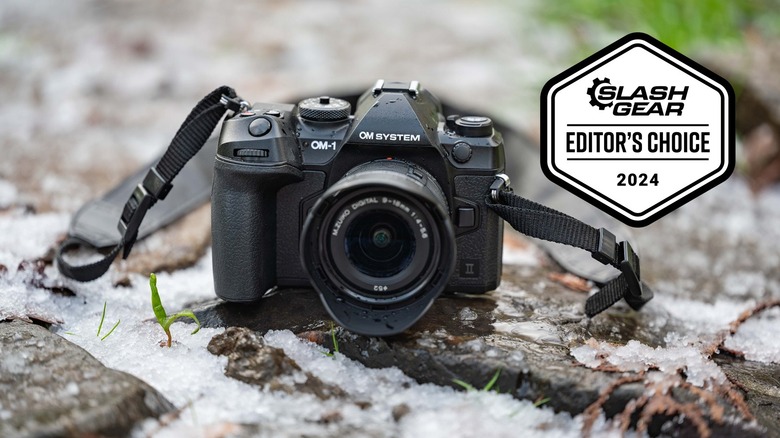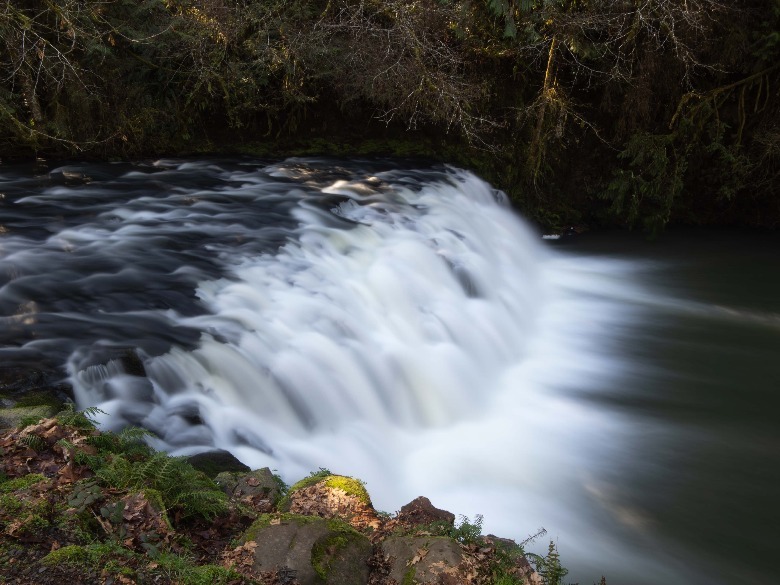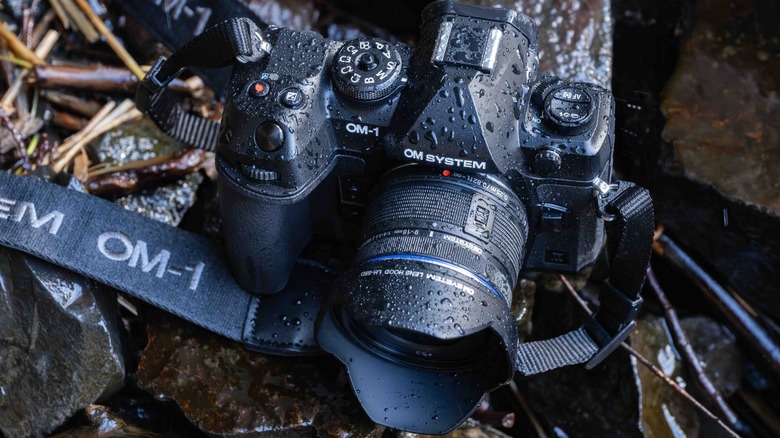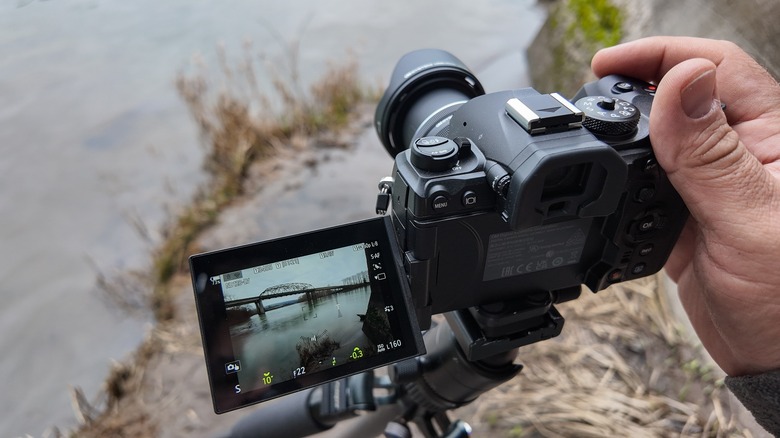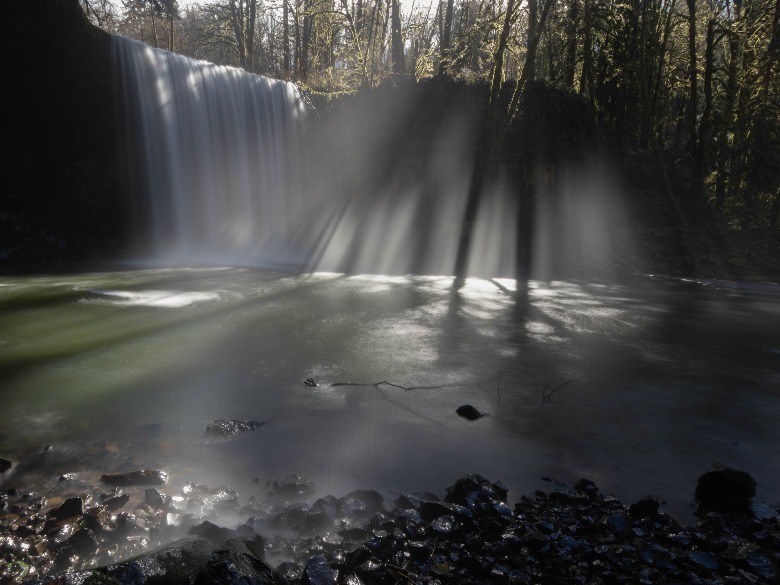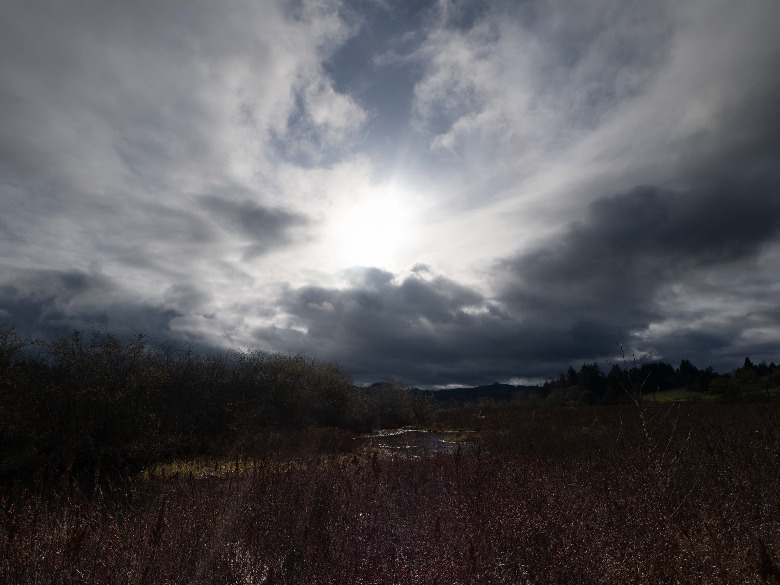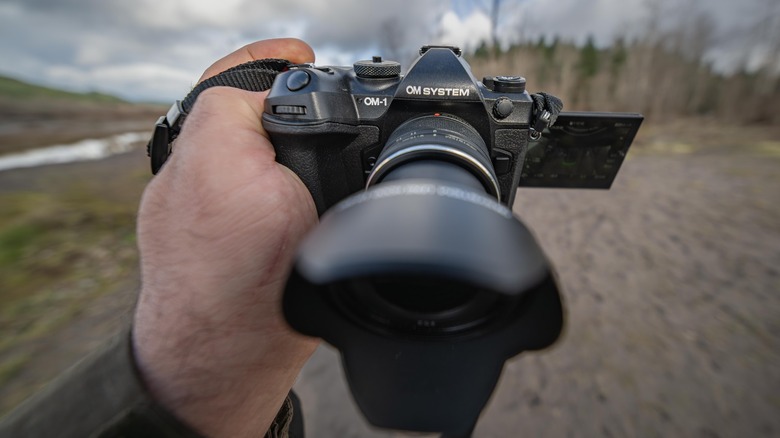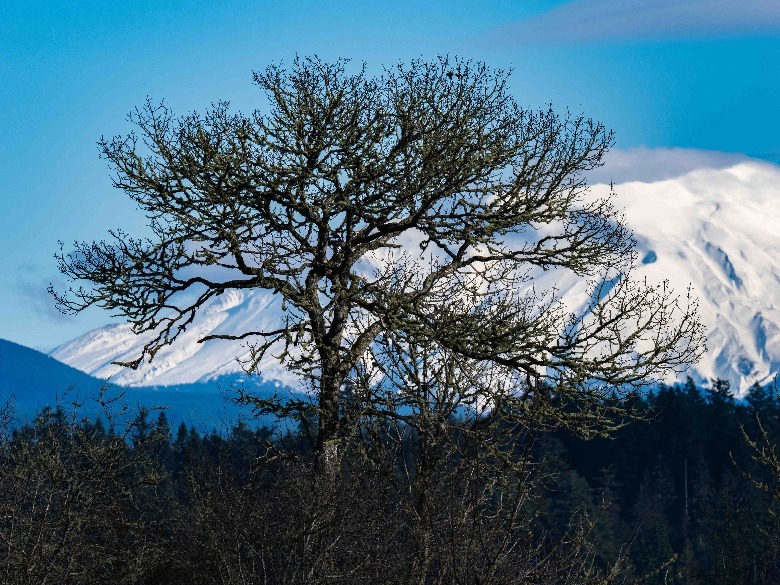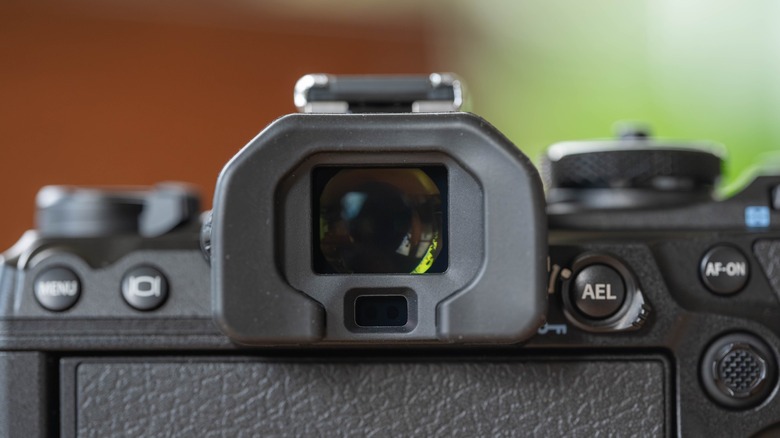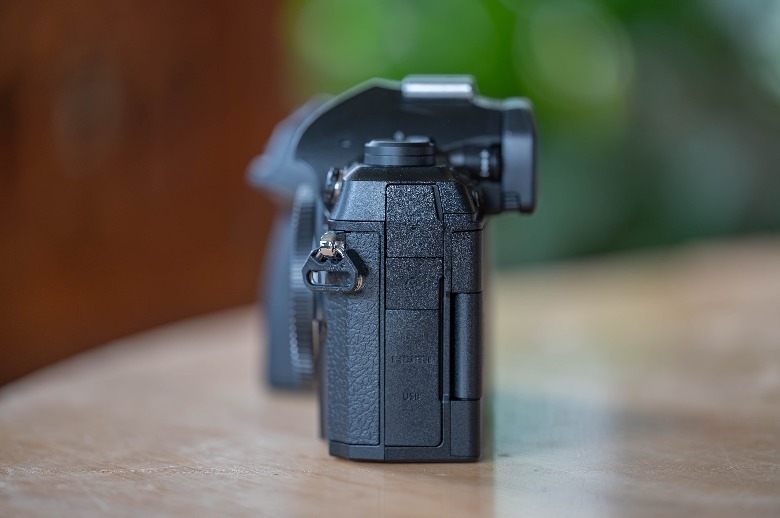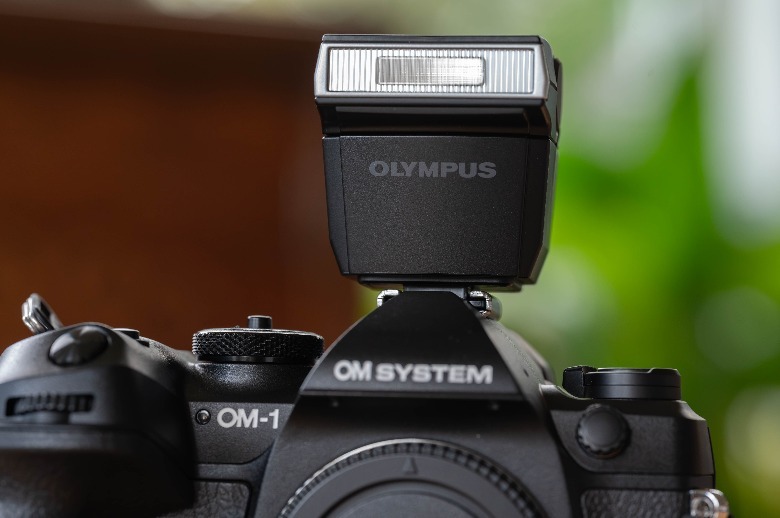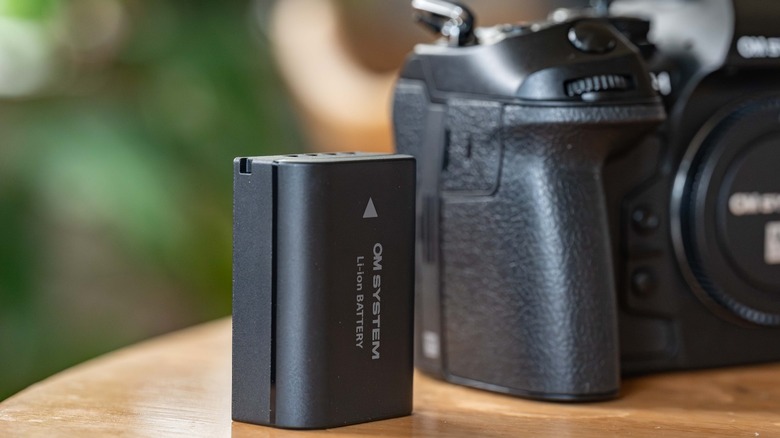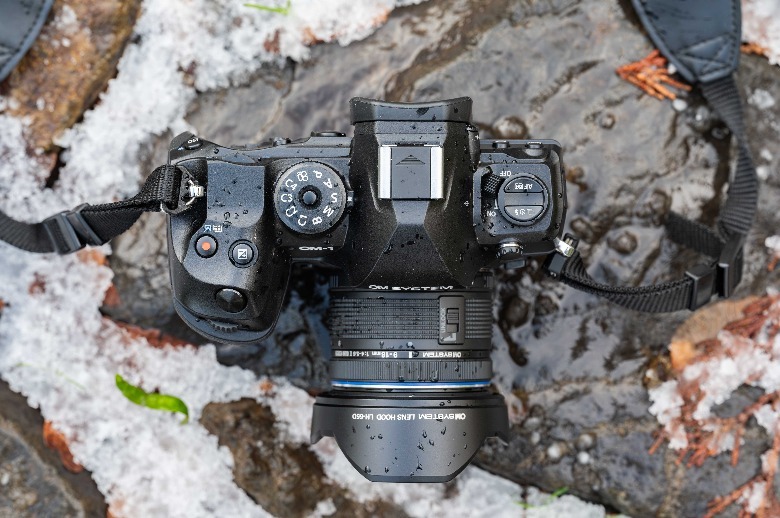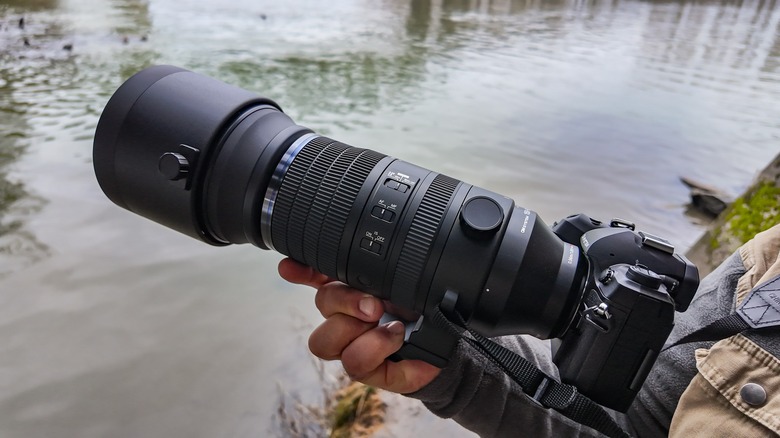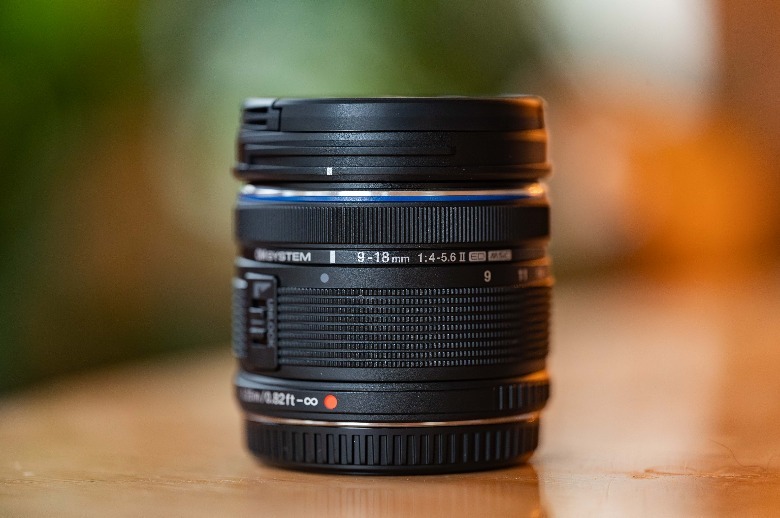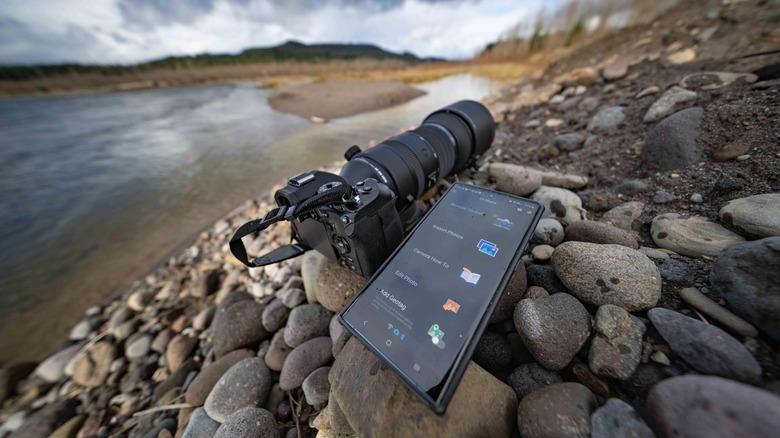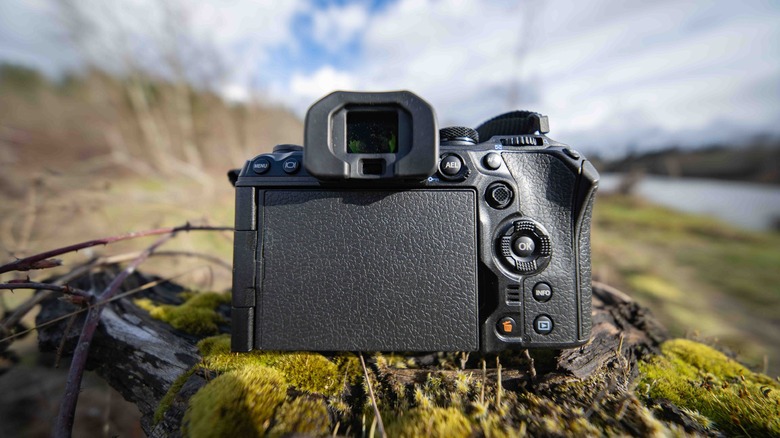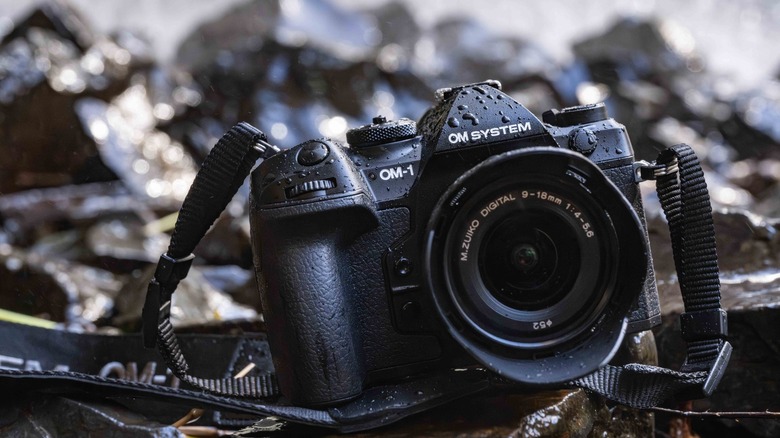OM System OM-1 Mark II Review: A Pro-Level Camera With An Adventure-Ready Body
- Live ND and other computational photography features are amazing
- Small and lightweight
- Extremely rugged and water resistant
- Good image quality
- Excellent image stabilization
- Autofocus well beyond its league
- 120fps burst shooting
- Extraordinarily comfortable
- Only an evolutionary upgrade over its predecessor
- M4/3 image quality isn’t as good as full frame
- Video capabilities have room for improvement
The OM System OM-1 Mark II (AKA "Mkii") is the long-awaited follow-up to the Olympus OM-1, and while it's clear that the OM-1 Mkii is only an evolutionary step up from its predecessor, there are nonetheless some highly attractive aspects to this camera. On paper at least, it looks like a really appealing camera for those who want a lot of advanced capabilities packed into a small, lightweight body capable of withstanding whatever nature can throw at it.
Whether the OM-1 Mkii is a camera you might want to add to your kit will depend on a lot of factors, and one of the questions you might well ask is what's the point of buying a camera with a relatively tiny M4/3 sensor when large, full frame sensors have grown so attainable. That's a question that this review will attempt to answer, and we will also see whether or not the impressive computational features of the Om-1 Mkii live up to the hype.
OM System provided a sample of the OM System OM-1 Mkii for this review.
Excellent image quality, with caveats
The 20.4-megapixel micro 4/3 stacked BSI live MOS sensor in the Om-1 Mkii isn't breaking any boundaries with its resolution or image quality, but with that said, it produces beautiful results. I love the color rendition of the OM-1 Mkii, and the images captured with this camera are sharp with plenty of detail. It's just important to note that you don't have as much capability for cropping after the fact as with a higher-resolution camera.
Video captured with OM-1 Mkii also looks great, and the camera can capture up to 4K 60fps or 1080p 120fps. This is perfectly adequate, though I would have liked to have seen at least 4K 120fps here. Flat, OM-Log400, and HLG are all great options to have for shooting video on the OM-1 Mkii, and while I wouldn't consider this a video-first camera, it's no slouch.
Low light performance is decent — the OM-1 Mkii can go up to 102400 ISO, though it gets far too noisy well before that point. At the low end, you get ISO 80, which is helpful in bright lighting scenarios. Dynamic range is wide enough that I never had difficulty rescuing blown-out highlights and crushed shadows.
Doesn't need to be coddled
There's something incredibly freeing about a camera you don't have to treat like a delicate flower or a priceless vase. The OM-1 Mkii is IP53 certified, meaning it's highly dust and water-resistant. It's not waterproof, so you can't take it swimming, but we didn't need to concern ourselves while shooting in the rain or the heavy spray from a roaring waterfall. The OM-1 Mkii is also guaranteed to work in temperatures down to 14 degrees Fahrenheit (-10 degrees Celsius), and in general, It's a really solid camera in terms of its construction, and I never felt concerned about its welfare.
I tested the OM-1 Mkii in the middle of a Pacific Northwest winter. Whether scrambling down a muddy trail into a canyon or attempting to capture elusive lighting during a snowstorm, it never let me down. The rugged qualities of the OM-1 Mkii are certainly one of its key selling points, and it doesn't disappoint in this regard.
Live ND is amazing
My absolute favorite feature of the OM-1 Mark ii is Live ND (Neutral Density)– that's a feature that is reason enough to consider this camera on its own. These run from a mild ND2 to a radical ND128, and they allow you to achieve spectacular long-exposure shots even in the middle of the day without having to pack along expensive and delicate physical ND filters. I used Life ND extensively to capture long exposure shots of rivers and waterfalls, and in the process created some of the best photos I've ever captured.
The only downside is that Live ND doesn't apply to video, which would be very useful indeed, as I found while using physical built-in ND filters in my recent review of the DJI Ronin 4D-8K. However, the OM-1 Mkii has another trick up its sleeve in the form of new graduated Live ND filters, which include GND2, GND4, and GND8 strength options. This is ideal for situations where you need to control the brightness of a particular portion of the image, typically the sky.
Additionally, the OM-1 Mkii includes HDR shooting options, live composite (perfect for capturing star trails), focus stacking, and a high res mode which expands the resolution of your still images to 50MP when shooting handheld or 80MP when using a tripod, thus in part overcoming a limitation of M4/3. These computational shooting modes are extraordinarily impressive and make the OM-1 Mkii a really versatile photographic tool.
Impressive image stabilization and autofocus
OM System has achieved something quite remarkable by pushing the image stabilization capabilities of the OM-1 Mkii to 8.5 stops, something then-Olympus once claimed was not possible due to limitations imposed by the rotation of the Earth. Apparently, OM System found a way past this, and the result is a camera that rarely misses a shot due to camera shake.
I was particularly impressed when shooting at the full frame equivalent of 1200mm and being able to reliably snap sharp images at only 1/600. This is also the first interchangeable lens camera I've used that approaches action-camera level video stabilization, though it's not quite up to the standards of the Insta360 Ace Pro, GoPro Hero 12, or DJI Action 4.
Autofocus is similarly impressive; it's fast and accurate and includes AI subject detection that rivals that of the Nikon Z8 or Z9. Testing it by tracking birds in flight, I saw comparable results to those much more expensive cameras. It's similarly effective at grabbing focus on human eyes as well, and only stumbled when I tried photographing small brown birds in dense thickets of brush, which no camera I've used has managed with much success.
On top of all this, the OM-1 Mkii can capture RAW photos at up to 120fps, including in the pro capture mode which continuously buffers photos until you fully press the shutter button, wherein the photos immediately preceding that moment are saved. This allows you to capture unpredictable moments with relative ease — I find it of particular use for wildlife photography.
Bright viewfinder, fully articulating screen, and decent port selection
The viewfinder is a high resolution 5.76 million dot display, while the screen is 1.62 million dots, and both are bright with great color and clarity. The screen is my favorite variety, a fully articulating monitor with a particularly strong hinge and clasp. It swings out from the camera so that it can face forward or really in any direction you desire. With the monitor flipped face in, it's possible to shoot through the viewfinder without smudging the face of the screen, and orientating the screen in this fashion also protects it from damage.
A type-D micro HDMI port enables you to output your camera feed to an external display, while other ports include USB-C, a 3.5mm headphone jack, and a 3.5mm microphone jack. Covers for these ports feel robust, and I'm optimistic they will resist the warping that occasionally afflicts such covers. You also get dual SD card slots, which is an important feature — particularly for professional photographers.
Also of note is the included external flash unit, which is nice to have, particularly in an era where integrated flashes have largely disappeared from cameras.
Comfortable grip and good battery life
As someone with large hands who appreciates a camera with a substantial grip, I can confidently say that the OM-1 Mkii is among the most comfortable cameras I've ever used. It fits my hand as if it was molded specifically for it, and thanks to this the camera never felt awkward even when shooting with a lens many times the size and weight of the camera.
Beyond this, the placement of controls is well thought out, and the texture of buttons, dials, and switches is nicely tactile. The whole camera seems purpose-built to provide maximum operability and security in any condition. When scrambling around on spray-slicked boulders by raging waterfalls I experienced several tumbles. While I ended up bruised and muddy, I never even came close to dropping the camera.
Battery life was surprisingly good; despite going out on long photo/video expeditions, I never felt limited by battery life. In small cameras, battery life is often a concern, but not the Om-1 Mk II. In many ways, this is a big camera in a little body.
New lenses for a new camera
OM System sent along two of their latest lenses to test out alongside the OM-1 Mkii, both of which will be the subject of their own full reviews here at SlashGear. The first is the miniscule and versatile M.Zuiko Digital ED 9-18mm F4.0-5.6 which, as is implied by its variable aperture, is an absolutely tiny little lens.
Don't let its small size fool you though – this is a razor-sharp lens with a highly useful equivalent focal range of 18-36mm. While the aperture isn't ideal for low light or dreamy out-of-focus backgrounds, this lens is, nonetheless, perfect to pair with the OM-1 Mkii. It's ideal for wide-angle landscape photography and doesn't add a meaningful amount of weight to the camera body. It should be noted however that this lens isn't weather-sealed.
The M.Zuiko Digital ED 150-600mm F5.0-6.3 IS, on the other hand, is quite a large and chunky lens, the design of which is typical for this focal range. However, considering that its effective full-frame focal length equivalent is 300-1200mm, it starts to seem positively compact. Paired with subject detection AF and 7 stops of image stabilization when shooting with the OM-1 Mkii, the experience of shooting with this lens really surprised me.
As far as I'm concerned, as someone whose favorite subjects are landscapes and wildlife, these lenses provide an ideal photography setup with the OM-1 Mkii.
Navigable software
I had no problems navigating the on-camera menu system to adjust settings and access features of the OM-1 Mkii. It's not the snappiest layout I've seen, but it gets the job done.
The OI. Share app for Android and IOS, while a little dated in its appearance, is actually superior to other camera companion apps I've used in its range of functionality. Most notably, it connects relatively quickly and easily compared to something like Nikon's Snapbridge app. The interface for remote control of the camera is actually really well throughout too, and transferring photos from the OM-1 Mkii to your phone is fairly snappy. You can also watch recorded videos from the camera on your phone without downloading them, which is not something to be taken for granted with camera companion apps.
There's also some basic built-in editing tools, not as robust as you'd find in an app such as Lightroom Mobile, but all the basics are there.
Good value from a certain perspective
At $2,399.99, whether or not the OM-1 Mkii is a good deal or not is very much a matter of how you look at it. From a pure image quality perspective, that micro four-thirds sensor is not going to deliver as good results as a camera with a full-frame sensor, even those at significantly lower price points. The Nikon Zf for example is about $400 cheaper and delivers truly gorgeous images. However, unless maximizing image quality is all that matters to you, that is far too narrow a view to take.
When you take the excellent autofocus of the OM-1 Mkii into account, this camera trades blows with the Nikon Z8, a camera twice the price of the OM-1 Mkii. Then when you realize how awesome Live ND truly is, and that the OM-1 Mkii is much more travel and extreme adventure capable than its bulkier full-frame cousins with their enormous weighty lenses, things begin to balance out fast in terms of value.
Conclusion
I've come to absolutely love the OM System OM-1 Mkii during my time testing it. I was worried that I would find the limitations of a micro four-thirds sensor too difficult to work with, but for the most part, I was delighted with the images I produced using this camera.
While this device's image quality isn't on par with that of full-frame cameras, it's nonetheless very good, and it's a worthy tradeoff for the remarkable portability and ruggedness of the OM-1 Mkii. Also, the Live ND features of the camera enabled me to easily capture images that would have otherwise been impossible with any other camera, unless I went to the trouble of carrying a bag full of cumbersome filters with me. For backcountry travel where saving weight and space in my pack is imperative, and where you need gear that won't fail you no matter the conditions, the OM-1 Mkii would be my first choice.
While the OM-1 Mkii does offer meaningful upgrades over its predecessor, those who already own that camera don't have a huge incentive to trade in for the new model. However, this is a great jumping-on point for anyone who's been eyeing an OM-1. Even if you already own a big full-frame camera, this may be a great addition to your kit for specific scenarios. The OM System OM-1 Mark II is a great camera that's easy to recommend.
The OM System OM-1 Mark II can be purchased from OM System's online store for a starting price of approximately $2,399.99 (body only).
